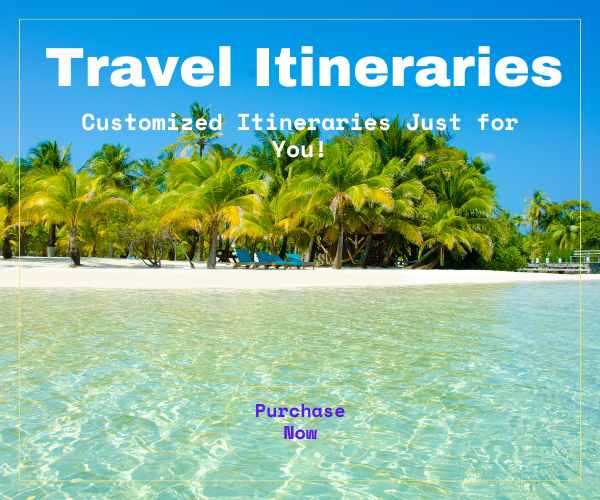
The Ultimate 48-Hour Travel Prep Guide: Plan, Checklist, and Advice

Travelling is always an exhilarating experience, filled with the promise of new adventures, cultures to explore, and memories to create. However, those 48 hours before departure can often feel like a whirlwind of preparation and last-minute errands. There’s much to consider, from ensuring you have all your documents to packing efficiently and securing your home. It’s easy to feel overwhelmed, especially if you juggle work, family, and other responsibilities with your travel plans.
But fear not! With some organisation and a solid plan, you can transform these potentially stressful final days into a smooth prelude to your journey. Whether you’re heading off on a quick weekend getaway to recharge your batteries or embarking on a long-term adventure to explore distant lands, having a well-thought-out checklist and a clear set of steps can make all the difference.
In my years of travel, I’ve refined a foolproof routine that ensures I leave no stone unturned and start my trip on the right foot. This guide will walk you through every essential step – from confirming your reservations and packing smartly to organising your home and making financial preparations. By following these tips, you’ll be fully prepared and able to relax and look forward to your trip with excitement rather than anxiety.
So, let’s dive in and ensure you’re ready for anything. Here’s my comprehensive guide to help you be fully prepared, stress-free, and excited as you embark on your next adventure.

The Ultimate 48-Hour Travel Prep Guide: Plan, Checklist, and Advice.
The Ultimate 48-Hour Travel Prep Guide: Plan, Steps, Checklist, and Advice
Travelling is an exciting experience, but the 48 hours before departure can be a whirlwind of preparation and last-minute errands. Whether you’re going on a quick weekend trip or a long-term adventure, having a well-thought-out plan can turn those potentially stressful final days into a seamless start to your journey.
Introduction: The Calm Before the Storm
I’ve been there many times – counting the hours until departure, ticking off items on my checklist, and dealing with that nagging feeling that I might have forgotten something. Over the years, I’ve refined my 48-hour pre-travel routine to a fine art.
Now, I’m sharing my ultimate guide with you. This plan includes everything from confirming your reservations to ensuring your home is secure, packing efficiently, and staying healthy. So, let’s dive in and ensure you’re ready for anything!
1. Confirm All Reservations and Documents
First Things First:
- Check Your Itinerary: Start by reviewing your travel plans. Confirm all flights, accommodations, and transportation bookings. Print or download any necessary documents, including boarding passes and hotel reservations.
- Passport and Visas: Ensure your passport is valid for at least six months beyond your return date. Check visa requirements for your destination and have them ready if needed.
- Travel Insurance: Double-check your travel insurance details to ensure they cover all aspects of your trip. Keep a copy of the insurance policy handy.
Additional Tips:
- Emergency Contacts: Compile a list of emergency contacts, including family members, your country’s embassy, and any local contacts at your destination.
- Copies of Documents: Make photocopies of important documents like your passport, visa, and travel insurance. Keep these copies separate from the originals.
2. Pack Smartly and Efficiently
Make a List:
- Clothing: Pack according to the weather and activities planned. Include versatile pieces that can be layered. Remember essentials like underwear, socks, and swimwear, if applicable.
- Toiletries: Bring travel-sized shampoo, conditioner, soap, toothpaste, and a toothbrush. Remember to pack any medications you may need in your carry-on.
- Tech Gear: Chargers, power banks, and adapters are essential. Also, ensure you have your camera, smartphone, and other gadgets. Remember headphones for entertainment during your journey.
- Miscellaneous: Bring a travel pillow, snacks, books, or anything else that makes your journey more comfortable. Also, bring a reusable water bottle to stay hydrated.
Pro Tips:
- Packing Cubes: Use packing cubes to organise your suitcase and maximise space.
- Outfit Planning: Plan your outfits ahead of time to avoid overpacking. Stick to a colour scheme so you can mix and match easily.
3. Organise Your Home
Secure Your Home:
- Inform a Trusted Person: Let a neighbour or friend know you’re leaving. They can monitor your place, water your plants, and collect your mail.
- Unplug Electronics: Unplug devices like the TV, microwave, and computer to save energy and reduce fire risks.
- Set Timers: Use timers for lights to make it seem like someone’s home, deterring potential burglars.
Additional Tips:
- Pet Care: Arrange someone to take care of your pets or book them into a reputable boarding facility.
- Mail Hold: If you’ll be away for an extended period, consider placing a hold on your mail through the postal service.

Before you reach paradise, minimise the fear and be prepared before you leave.
4. Health and Safety
Stay Healthy:
- First Aid Kit: Pack a small first aid kit with band-aids, antiseptic wipes, pain relievers, and any prescription medications.
- Vaccinations: Ensure you’re up-to-date on necessary vaccinations for your destination. Carry proof of vaccinations if required.
- Travel Health Kit: Include hand sanitiser, face masks, and personal hygiene products. Pack insect repellent if travelling to areas where mosquito-borne diseases are prevalent.
Additional Tips:
- Hydration: To avoid travel fatigue, start hydrating well before your trip. Carry a reusable water bottle and refill it after passing security.
- Healthy Snacks: To avoid unhealthy airport food, pack healthy snacks like nuts, granola bars, and fruit.
5. Financial Preparations
Money Matters:
- Notify Your Bank: To avoid card issues abroad, inform your bank of your travel dates. Consider setting up travel alerts for your credit and debit cards.
- Local Currency: Use local currency for immediate expenses like transportation and meals. Getting a small amount of cash from your home bank is often easier than finding an ATM immediately.
- Backup Cards: Bring an extra credit card and keep it in a different place from your primary one. This way, you have a backup if one gets lost or stolen.
Additional Tips:
- Currency Conversion: Research currency conversion rates to understand the value of your money abroad. Download a currency converter app for on-the-go conversions.
- Emergency Fund: Keep a small amount of cash hidden in a separate place as an emergency fund.
6. Last-Minute Tasks
Double-Check:
- Weather Forecast: Check the weather forecast for your destination and pack accordingly. Consider unexpected weather changes and pack a lightweight, foldable rain jacket or an extra layer.
- Downloads: Download any entertainment or maps you might need during travel. Offline maps can be a lifesaver if you don’t have reliable internet access.
- Confirm Transport: Book your transport to the airport or train station. Consider traffic conditions and allow plenty of time to get to your departure point.
Additional Tips:
- Travel Apps: Download travel apps that might be useful, such as language translators, transportation apps, and local guide apps.
- Comfort Items: Pack comfort items like a neck pillow, earplugs, and an eye mask for a more pleasant journey.

Don’t forget your camera, an essential item for your packing list.
7. Tips to Remain Calm Before Traveling
Stay Relaxed:
- Mindfulness and Meditation: Practice mindfulness or meditation to reduce stress. Even a few minutes of deep breathing can make a huge difference.
- Exercise: Physical activity can help reduce stress. To release tension, go for a walk, do some yoga, or hit the gym.
- Sleep Well: Ensure you get a good night’s sleep before your travel day. To improve sleep quality, avoid caffeine and heavy meals close to bedtime.
- Stay Organised: Keep your packing list and travel documents organised. Knowing everything is in place can significantly reduce anxiety.
- Break Tasks into Small Steps: Don’t try to do everything simultaneously. Break down your to-do list into manageable steps and tackle them individually.
- Music and Entertainment: Listen to calming music or watch your favourite show to relax and unwind.
- Talk It Out: Share your travel plans and concerns with a friend or family member. Sometimes, just talking about your plans can ease anxiety.
- Stay Positive: Focus on the exciting aspects of your trip. Visualise the fun and relaxation that await you at your destination.
8. The Final Checklist
Before you depart, it’s important to run through this quick checklist to ensure you haven’t forgotten anything essential.
- Passport and visas
- Travel Insurance
- Confirmed reservations
- Packed suitcase
- Tech gear and chargers
- Toiletries and medications
- The house was secured, and the neighbour
- Unplugged electronics
- Local currency
- Notified bank
- Checked weather forecast
- Downloaded necessary apps and entertainment
- Booked transport to the departure point
Conclusion: Ready, Set, Travel!
With everything checked off and preparations complete, you’re ready to embark on your adventure with peace of mind. The last 48 hours before a trip don’t have to be stressful; with a solid plan and thorough checklist, you can ensure everything runs smoothly.
Preparation is vital, but so is maintaining a calm and positive mindset. Embrace the anticipation and excitement that comes with travelling. Visualise the beautiful places you’ll visit, the fascinating people you’ll meet, and the enriching experiences you’ll have. It’s all part of the journey, from when you start packing to when you arrive at your destination.
Taking the time to prepare allows you to be fully present and enjoy every moment of your trip. Remember to keep things in perspective – even if something goes slightly awry, these unexpected moments often make for the best stories and memories. Flexibility and a positive attitude can turn any hiccup into an adventure.
As you embark on your journey, keep in mind the reasons why you love to travel. Whether it’s the thrill of exploring new cultures, the joy of discovering hidden gems, or simply the peace of mind that comes from a change of scenery, travel enriches our lives in countless ways.
So take a deep breath, savour the excitement, and look forward to the incredible experiences that await you. Each trip is a unique chapter in your travel story; with each one, you grow and learn something new. Embrace the adventure with an open heart and mind, and you’ll come back with souvenirs, cherished memories, and a refreshed spirit.
Safe travels and happy adventures! May your journey be filled with discovery, joy, and unforgettable moments.
Related Content to Fair Dinkum Traveller!
- Asian Adventure Preparation Before You Go Into the Continent!
- Solo Travel Essentials To Know Before Your Next Trip!
- Essential Advice for Exploring Seoul in Style – Seoul Travel Tips!

The Ultimate 48-Hour Travel Prep Guide: Plan, Checklist, and Advice.













































Get Your Free E-Book Today!
Stay in the loop with our monthly newsletter! Get expert travel tips and destination advice, and snag a free E-Book!
You have Successfully Subscribed!